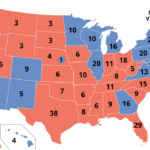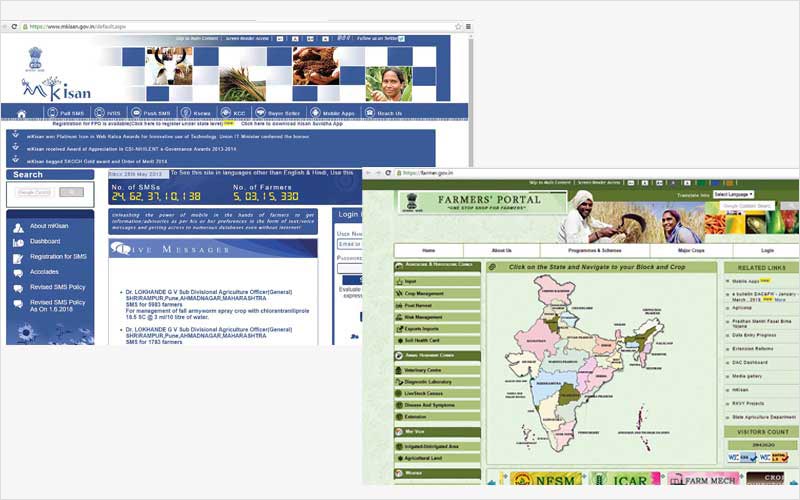- Cover Story
- Governance
- Globe Scan
- Corruption
- State Scan
- Talk Time
- Cover Story
- Governance
- Globe Scan
- Corruption
- State Scan
- Talk Time
Recent Posts
© Copyright 2007 - 2023 Gfiles India. All rights reserved powered by Creative Web INC.GovernanceFarm data at one click
To effectively realise precision agriculture in India, multiple stakeholders have to be brought together on one platform to consolidate real time data
Dr. Abhilaksh LikhiAugust 8, 20193 Mins read111 Views
 Written by Dr. Abhilaksh Likhi
Written by Dr. Abhilaksh LikhiThe Digital India Initiative of the Ministry of Elec-tronics and Information Technology aims to enable all citizens of the country to use digital infrastructure, make available related services on demand and also empower its citizens digitally. To further identify the drivers of India’s digital economy of the future, the Ministry has recently identified nine goals and 30 crucial digital themes.
One of the goals specifically focuses on the 2022 target of doubling farmers’ income. Agriculture accounts for 13 per cent of the country’s GDP and employs 45 per cent of the workforce. In this context, the importance and increasing relevance of digital applications in the field of agriculture cannot be undermined. Such applications are critical to improving yields, reducing costs, increasing market value of crops, optimising agriculture inputs and increasing direct access of farmers to the markets.
A key issue herein is the detailed use of real time data from a variety of sources to help small and marginal farmers increase productivity and output through more precise and customised advice. Precision agriculture primarily includes soil, weather and crop information as its intelligence building blocks. More specifically, public and private agencies alike, aim to first analyse soil nutrient conditions, aerial images, weather forecasts and other factors over generally four to six-month crop cycle. Technologies deployed to do so include mobile imaging, drone patrolling, GPS/RIPD tracking, production traceability etc. Thereafter, they advise farmers on the appropriate crop mix, fertiliser use and other relevant inputs on making considered decisions.
The importance and increasing relevance of digital applications in the field of agriculture cannot be undermined. Such applications are critical to improving yields, reducing costs, increasing market value of crops, optimising agriculture inputs and increasing direct access of farmers to the markets
Experts have observed that the Ministry of Agriculture and Farmers’ Welfare and state departments/universities combined operate approximately 80 and 800 portals, respectively. These cover almost all aspects of the agriculture value chain including seeds, soil fertility, weather patterns, farming practices and daily market prices, etc. The Government of India has also launched many initiatives in precision agriculture that are designed to put more information into farmers’ hands. The Ministry of Agriculture and Farmers Welfare’s ‘mKisan’ platform aims to increase the information available to farmers on myriad aspects of farming along with SMSs and the same has covered 42.4 million farmers with over 22.2 billion texts. Kisan Call Centres are currently active in 14 locations with the most popular query being near farm weather and rainfall forecasts. Several state governments too have, of late, begun to offer value-added services through such platforms in addition to online registration of farmers in the state for procurement.
But farmers face a challenge in gaining access to timely and accurate information and from one centralised portal. Such information could be on critical agricultural inputs such as which crop to sow, rainfall and other weather conditions, when to irrigate, the availability and cost of farm equipment, how to monitor crop health, pesticide use and adopting good agricultural practices.
Therefore, experts further observe that to effectively realise precision agriculture in India, multiple stakeholders have to be brought together on one platform to consolidate data. Such stakeholders include not only the government ministries of agriculture and water resources but also information technology companies, weather forecasting organisations and seed/fertilizer and farm equipment companies. Such an integrated yet open data platform could be used by government, research institutes and the private sector for maximum outreach to small and marginal farmers.
In the agristartup ecosystem of the country, there are startups that are already active in the predictive analysis for agricultural yield improvement and quality control. These include startups such as Farmguide, Intello Labs, Agricx, Skymet Weather and Progressive Environmental and Agricultural Technologies (PEAT). Besides, companies such as Microsoft and the International Crops Research Institute for the Semi-Arid Tropics (ICRISAT) have developed varied sowing solutions. Non-profit organisations such as Gates Foundation are also partnering with data intelligence companies like SocialCops to make data driven investments to develop an India Stack for Agriculture.
Mahindra has launched a web/mobile based digital platform called ‘MyAgriGuru’ that connects experts with farmers on market prices, weather and crop advisories. Tata Consultancy Services has designed the mKrishi platform to enable farmers in remote areas to access real time agriculture information.
In the above context, the Indian Council of Agricultural Research (ICAR) and its network of Krishi Vigyan Kendras (KVKs) too have to become effective partners in analysis of big data to make derivable insights that can be communicated to small and marginal farmers. This in turn can be coupled with public private partnerships within KVKs to impart realistic and updated ‘package of practices’.
The Niti Aayog Strategy Paper on ‘India@75’ points out two major constraints hindering adoption of precision agriculture–one, the huge gap that exists in the demand for and supply of requisite skills and two, the fragmented nature of landholdings. Current initiatives in data aggregation are being taken up under programmes such as e-NAM, Soil Health Card, PM Kisan and several other central and state government DBT schemes. This indeed will generate the necessary push over time to cover the skill gap and remove land related bottlenecks.
(The writer is an IAS officer posted as Joint Secretary in the Ministry of Agriculture and Farmers Welfare. The views expressed are personal)
Recent Posts
Related Articles
GovernanceNewsBackdoor entry of Private players in Railway Production Units ?
Written by K. SUBRAMANIAN To Shri G C Murmu C&AG Dear Shri Murmu,...
ByK. SUBRAMANIANFebruary 22, 2024GovernanceNailing Labour to The Cross
Written by Vivek Mukherji THEY grease the wheels of India’s economy with their...
ByVivek MukherjiMay 5, 2020GovernanceBig Metal Momentum
Written by GS Sood PRECIOUS metals especially gold and silver are likely to...
ByGS SoodMay 5, 2020GovernanceStrengthening Social Enterprise Ecosystem: Need for systemic support from the Government
Written by Jyotsna Sitling and Bibhu Mishra THE world faces several challenges today....
ByJyotsna Sitling and Bibhu MishraMay 5, 2020 - Governance
- Governance

























































